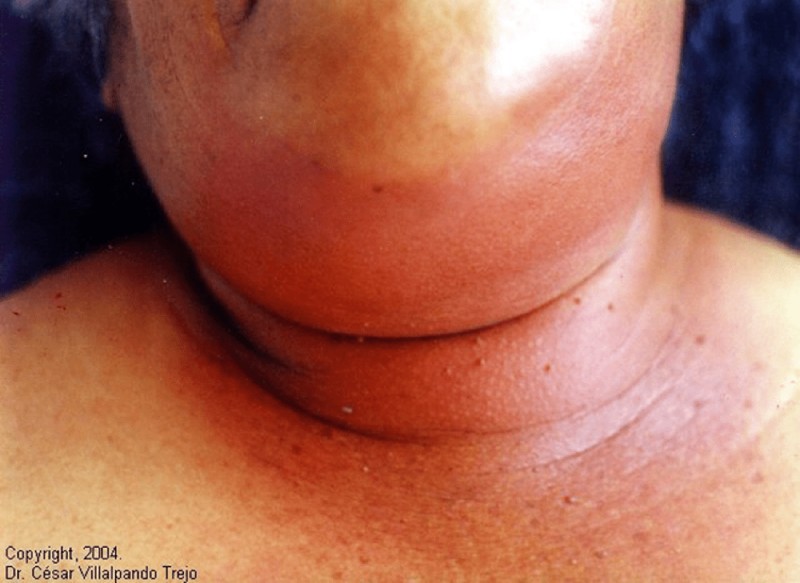
History: A 65 yr old diabetic woman complains of 1 week of lower anterior molar pain and now with 24 hours of sore throat, difficulty swallowing, and sweats. On physical exam, she is anxious and having difficulty breathing. She has significant trismus and so the pharynx is not visualized. Her tongue appears elevated and she is unable to protrude it beyond her teeth, and the sublingual space is indurated and elevated. What is the next best course of action?
- Administer broad-spectrum antibiotics and drain the submandibular abscess.
- Perform a cricothyroidotomy, administer intravenous fluoroquinolone, order a CT scan, and emergent head and neck surgery consultation.
- Perform rapid sequence endotracheal intubation, administer intravenous ampicillin–sulbactam, order a CT scan, and emergent head and neck surgery consultation.
- Perform rapid sequence endotracheal intubation, administer intravenous fluoroquinolone, order a CT scan, and emergent head and neck surgery consultation.
- Perform awake fiberoptic endotracheal intubation, administer intravenous ampicillin–sulbactam, order a CT scan, and emergent head and neck surgery consultation.
Answer: This patient presents with classic sublingual, submandibular space infection known as Ludwig angina. The tongue can be rapidly displaced posteriorly occluding the airway. The airway of choice is awake fiberoptic endotracheal intubation or awake tracheotomy. A CT of neck and intravenous antibiotics (penicillin, ampicillin–sulbactam and clindamycin) are the preferred choice, and incision and drainage by head and neck surgeon is the appropriate treatment.